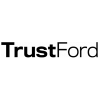
Guide for Buying a Used Car: What to Check
As soon as an absolutely new car leaves the automobile sales center, it immediately depreciates. It means that you can buy a high-quality used car at a much lower price. But in reality, purchasing a used car is a tricky lottery that can end in buying a lemon. If you really want to avoid paying big money for someone else’s problems and become the owner of a good value, you shouldn’t rely on luck, but rather on your Sherlock Holmes skills.
Rust, unevenly worn all-season tyres, or a musty smell are signs that must alert you. In this guide, we will tell you what to check and what to pay attention at while buying a used car.
Do your research
There are models of cars that proved themselves as problematic. So don’t chance your arm, but shortlist cars that have only a positive reliability record. Surf the web and collect all possible information concerning the reliability and common issues – from charts to owners’ feedbacks. Without doing this homework, you will be unprepared for an informed inspection.Do a thorough inspection
Regardless of whom you buy the car from, meticulously inspect it. If you doubt in your expertise, take along a qualified mechanic or a friend who knows a thing or two. Here is what you should be paying a special attention at:
1. Car’s exterior. Inspect the body searching for dents, scratches, or rust. If you suspect that dents could have been patched with a filler, use a magnet to check it (it won’t stick). Look at the lines of doors and fenders. Any misalignments and gaps can be a sign of either a factory defect or a slapdash repair. Verify the colour on every body panel (must be the same). It’s up to you what cosmetic defects you can tolerate, but rust is what you definitely shouldn’t ignore. Thoroughly inspect wheel wells (and inside them), door bottoms, and rocker panels where rust usually appears.
2. Suspension. If the shock absorbers work well, the car’s corner rebounds only once after you bounce it up and down. If it keeps moving, it’s a warning sign, as well as if you hear a clunking sound or notice a play when you tag the top of each front tyre.
3. Tyres. They can betray what the dealer is trying to hide. If the odometer shows 20k miles or less, the car is likely to be on its original set of tyres. If you see new tyres and a mileage less than 20k miles, it can be a sign that the odometer has been rolled back. And it’s a serious concern. All tyres must be the same, and the tread on all four tyres must be worn evenly. If front tyres have signs of an excessive wear on their outside shoulders, it’s a true sign that the car has been driven aggressively.
4. Under-the-hood check. Warning signs are
• oil splashed in the engine bay or on the road under the engine,
• cold engine is hard to start,
• rock-hard or cracked rubber hoses (must be supple),
• shabby belts,
• gritty, foamy, or grey motor oil or drops of water on a dipstick,
• brown transmission fluid that smells like something burnt or metal particles on a dipstick,
• rusty or milky coolant in the radiator,
• corrosion on the battery,
• low electrolyte level (you need to unscrew battery caps to see it).
5. Interior. Smell the air. If you feel a pungent odour, the previous driver used to smoke in the car. Musty smell tells about water leaks issues. The chance to get rid of such an odour is low, so if you can’t bear it, just look for another car. Rubber on pedals shouldn’t be worn too much (or be new) in cars with a low mileage. Check if a sunroof opens/closes and seals properly then check the headliner for signs of water leaks. Rust or water in the spare tyre in the trunk will help you to find out.













